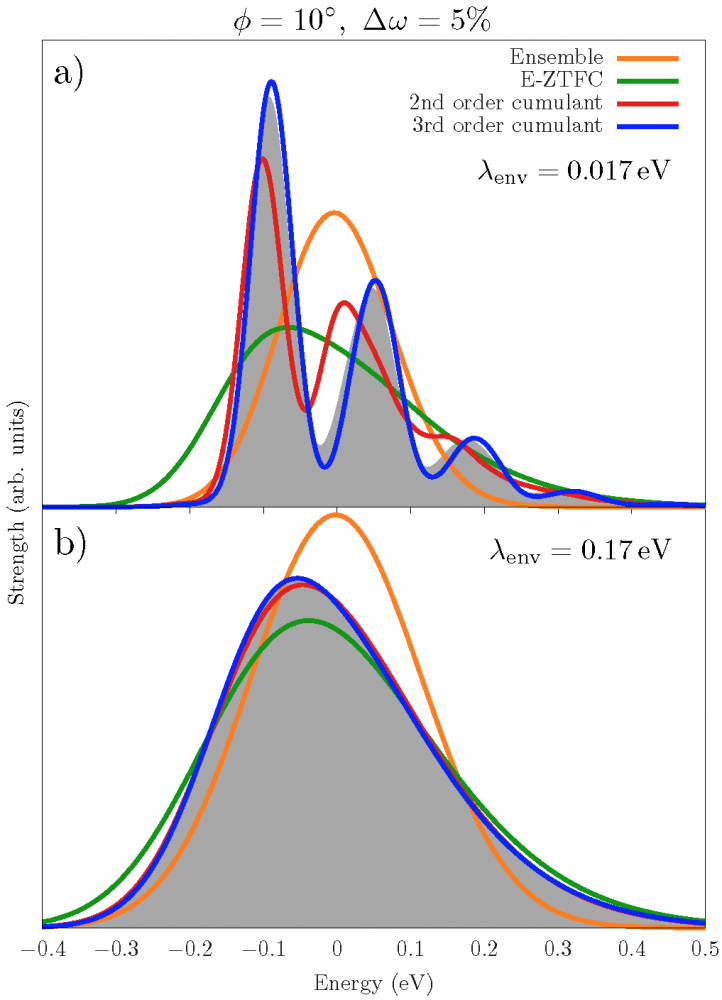Our collaborative work with the Markland group analyzing the performance of a hierarchy of spectroscopic methods for different model systems has been submitted. For now, read about it on ChemRxiv.

In this manuscript, we simulate the absorption spectra of model systems in the condensed phase using a variety of approaches, including both static and dynamic methods, highlighting the successes and failures of each approach. Specifically, we focus on the ensemble scheme, which can address anharmonic potential energy surfaces but relies on the applicability of extreme nuclear-electronic timescale separation; the Franck-Condon method, which includes dynamical effects but only at the harmonic level; as well as the recently introduced ensemble zero-temperature Franck-Condon approach, which straddles these limits. We also devote particular attention to the performance of methods derived from the cumulant expansion of the energy gap fluctuations and test the ability to approximate the requisite time correlation functions using classical dynamics with quantum correlation factors. These results provide insights as to when these methods are applicable and able to capture the features of condensed phase spectra qualitatively and, in some cases, quantitatively across a range of regimes. Although the 2nd and 3rd order cumulant approaches have not been heavily used to calculate optical spectra due to their high computational cost, we show that they provide distinct advantages over the other methods: (i) unlike the ensemble and E-ZTFC methods, they capture dynamical effects such as vibronic progressions, (ii) they can easily include the effect of the environment on the energy gap, circumventing the problems in applying the Franck-Condon method to condensed phase systems, and (iii) they are applicable to anharmonic systems for which the statistics of the energy gap fluctuation are (nearly) Gaussian. With the advent of advances in excited state electronic structure theory algorithms and HPC capabilities, the use of cumulant methods, which require many thousands of excited state electronic structure calculations, is now possible for condensed phase systems.
